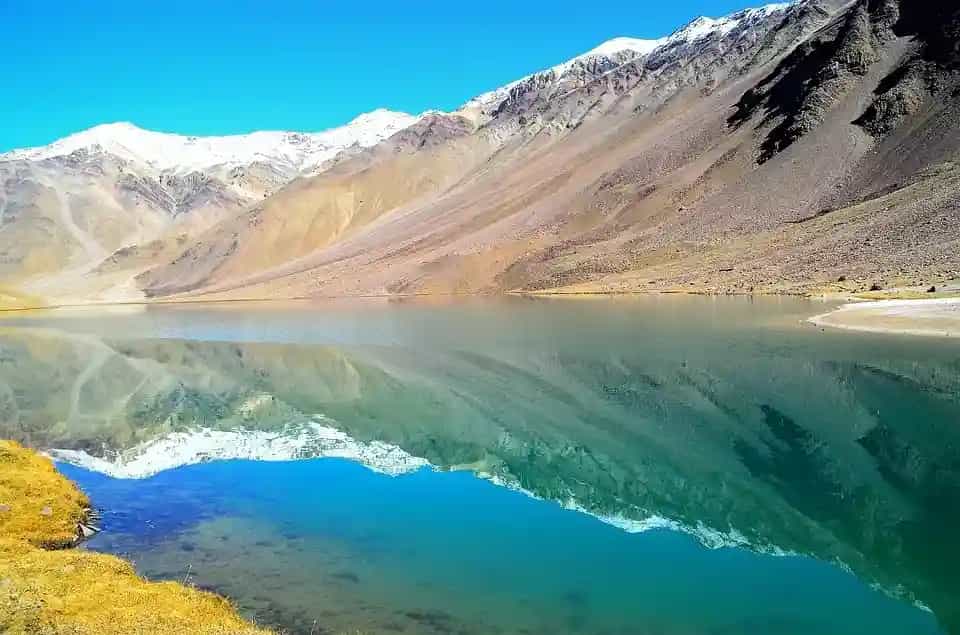Spiti Valley is more than just a destination – it’s an emotion wrapped in rugged mountains, ancient monasteries, and a way of life untouched by modern chaos. For every traveler who dreams of setting foot in this “Middle Land,” one question stands above all: what is the best time to go Spiti Valley? The answer matters because the valley transforms drastically with every season, offering new experiences, challenges, and stories.
Planning your Spiti Valley tour around the right season can mean the difference between a rewarding journey and an unexpectedly harsh adventure. In this guide, we will explore the valley season by season, month by month, and help you decide when exactly you should plan your trip.
Why Timing is Crucial for Spiti
Unlike typical tourist destinations, Spiti Valley sits at an altitude of more than 12,000 feet. Its location in the Trans-Himalayan range gives it a cold desert climate, extreme winters, and limited connectivity. The valley’s high passes remain closed for months due to snow, while summers invite travelers with open roads and vibrant life.
That’s why understanding seasonal differences is essential before finalizing your Spiti Valley tour. Whether you’re seeking adventure, cultural immersion, or solitude, the timing of your visit shapes your entire experience.
Seasonal Breakdown of Spiti Valley
Spring (April – May): The Awakening
Spring is when the valley begins to stir after its long winter slumber. Snow starts to melt in lower areas, though high passes like Kunzum remain closed.
Temperatures: 0°C to 15°C
Access: Only via the Shimla-Kinnaur route, as Manali remains blocked.
Highlights: Apple orchards in bloom, peaceful monasteries, fewer tourists.
Drawbacks: Roads may still be rough, and some villages remain cut off.
For travelers who crave raw beauty and tranquility, spring offers a refreshing yet challenging introduction to Spiti.
Summer (June – September): The Ideal Window
Summer is widely considered the best period to visit Spiti Valley. The weather is pleasant, roads are open, and the valley welcomes travelers with its full glory.
Temperatures: 10°C to 25°C
Access: Both Shimla and Manali routes are open, including Kunzum Pass.
Highlights: Road trips, camping at Chandratal Lake, treks in Pin Valley, village stays in Langza, Komic, and Hikkim.
Drawbacks: This is peak tourist season, so popular spots can get crowded.
For bikers and road trippers, this is the ultimate time to embark on the journey. You’ll witness lush meadows, turquoise rivers, and cultural festivals like the Ladarcha Fair.
Autumn (October – November): The Golden Silence
As summer fades, autumn arrives with crisp air and breathtaking golden landscapes.
Temperatures: -3°C to 15°C
Access: The Manali route starts closing by late October, but Shimla remains open longer.
Highlights: Stargazing under crystal-clear skies, stunning photography opportunities, quiet villages.
Drawbacks: Nights get colder, and some homestays begin to shut for winter.
If you prefer peaceful travel and don’t mind a little chill, autumn is a deeply rewarding season to explore Spiti.
Winter (December – March): The Realm of Snow
Winter in Spiti is for the fearless. With temperatures plunging as low as -20°C, the valley becomes a world of snow and silence.
Temperatures: -20°C to -5°C
Access: Only via Shimla; most high passes and routes are snowbound.
Highlights: Snow leopard expeditions, frozen rivers, a glimpse into authentic local life.
Drawbacks: Extreme cold, limited facilities, unpredictable roadblocks.
This season is ideal for those who seek raw adventure and want to experience the valley’s untouched wilderness.
Month-by-Month Guide
April – May: Good for solitude, limited access via Shimla.
June – July: Perfect for treks, road trips, and sightseeing.
August: Beautiful landscapes, but watch out for monsoon landslides on the Shimla route.
September: Best balance of weather, road conditions, and fewer crowds.
October: Gorgeous landscapes but colder nights.
November – March: Harsh winter, for experienced adventurers only.
Cultural Festivals
Your trip timing can also align with Spiti’s rich festivals:
Chakar Festival (July) at Shashur Monastery
Ladarcha Fair (August), where traders and locals celebrate together
Losar (February), Tibetan New Year with traditional rituals
These add depth and cultural richness to your journey.
Travel Routes
Shimla – Kinnaur – Spiti Route: Open nearly year-round, though prone to landslides during monsoon.
Manali – Rohtang – Kunzum – Spiti Route: Open June to mid-October, shorter but more challenging.
Suggested Reads to Plan Better
For detailed activities and cultural insights, check out our blog: Things to do in Spiti Valley
To understand route planning and elevation challenges, don’t miss: Kunzum Pass height
Travel Tips by Season
Summer (June–September): Best for families, bikers, and photographers.
Spring (April–May): Suited for solitude-seekers and offbeat explorers.
Autumn (October–November): Perfect for budget travelers and peace lovers.
Winter (December–March): Only for extreme adventure enthusiasts.
Packing Essentials
Layered clothing for fluctuating temperatures
Good trekking shoes
Medicines for altitude sickness
Valid ID and permits
Power banks and torches
Why Summer Stands Out as the Best
Although every season has its charm, summer (June–September) is widely accepted as the best time to go Spiti Valley. This period allows you to experience everything the valley offers—open monasteries, high-altitude villages, lakes like Chandratal, treks, and vibrant festivals—without the extreme challenges of winter.
Final Thoughts
Spiti Valley is not a destination you simply visit—it’s a place that stays with you long after you return. Choosing the right time to go is essential, not just for safety and comfort, but also to ensure your journey resonates with your travel goals.
If you dream of road trips under open skies, summer is perfect. If you seek silence and rawness, autumn or spring might be your calling. And if adventure runs in your veins, winter will test and reward you like nothing else.
So, the best time to go Spiti Valley depends entirely on the kind of traveler you are. The valley has a season for everyone—find yours, and let the Himalayas tell you their story.
